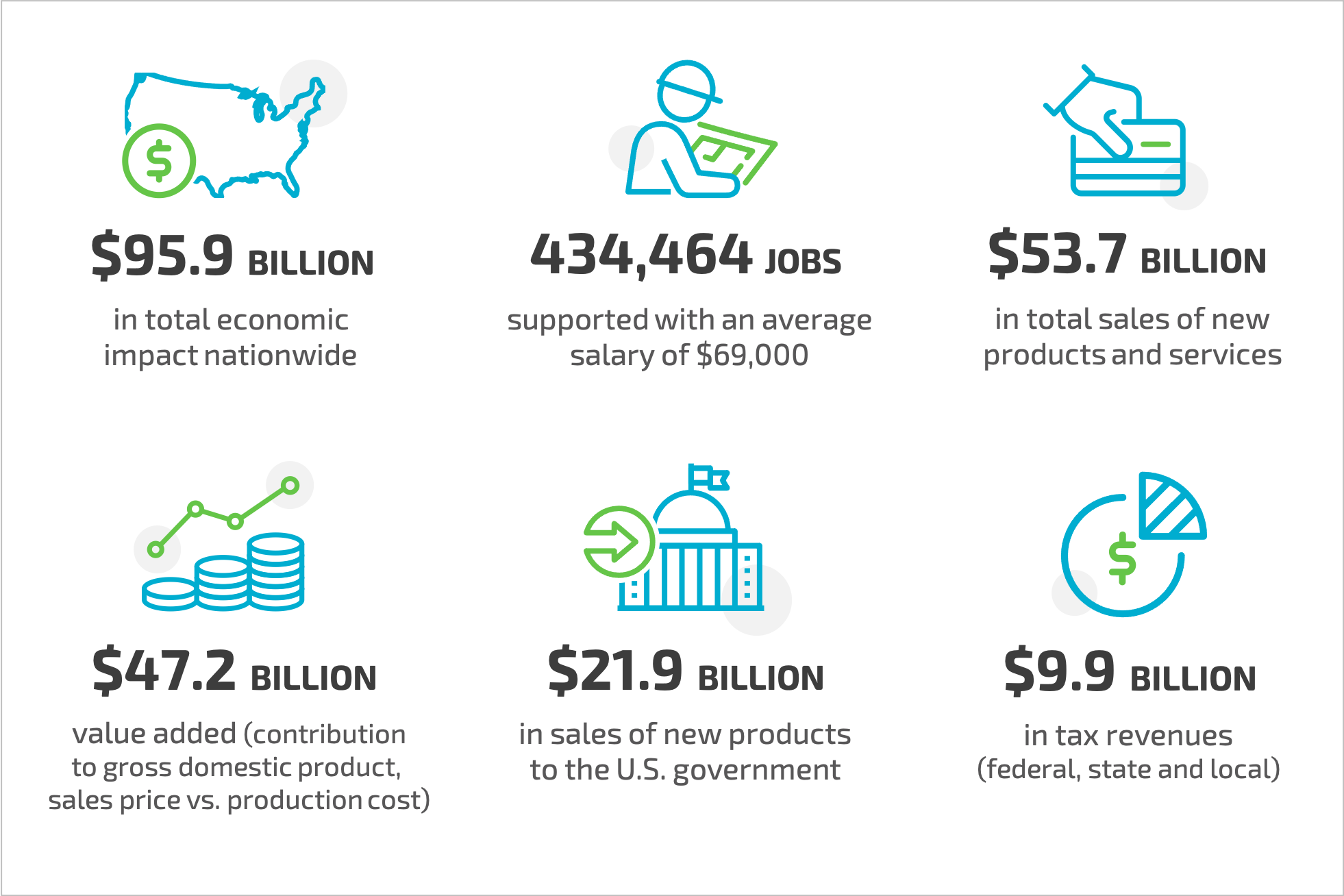ALBUQUERQUE, N.M. — Cooperative Research and Development Agreements and patent license agreements between Sandia National Laboratories and outside partners led to billions in economic impact and supported tens of thousands of high-paying jobs every year for the last two decades, according to a recent study on national economic contributions.
CRADAs and licenses signed with 223 companies between 2000 and 2010 resulted in an estimated $95.9 billion in total economic impact and $53.7 billion in total sales of new products and services through 2020, according to the study conducted by federally-funded technology transfer center TechLink, in collaboration with the Leeds School of Business at the University of Colorado, Boulder.
In addition, sales from the beginning of 2000 through 2020 supported an average of more than 20,600 jobs per year — more than 434,000 over two decades — with an average salary of $69,000.
“Transferring the labs’ innovative technologies to the marketplace through CRADAs and patent license agreements is a vital part of Sandia National Laboratories’ mission,” said Mary Monson, Sandia’s senior manager of technology partnerships and business development. “We are pleased that the report showed some of the positive impacts of our work with outside partners.”

The study evaluated the extent to which Sandia license agreements and CRADAs result in new products and services, benefit the national economy, improve the nuclear weapons stockpile for the United States and international allies and support the National Nuclear Security Administration missions.
According to the study, the results understate the economic impacts because of multiple agreements with confidential outcomes, nonresponsive companies, no adjustment for inflation over the 21-year period and other factors discussed in the report.
The research team reached 223 companies with 410 different agreements — 313 CRADAs and 97 patent licenses. Outside partners were asked a series of questions regarding sales of new products and services and other outcomes resulting from the technologies associated with the partnerships, according to the report.
Other highlights of the report include:
- $47.2 billion in value added, which is the contribution to gross domestic product, or a product’s sales price minus its production cost (excluding labor).
- $9.9 billion in taxes collected by federal, state and local governments.
- $21.9 billion in sales to the U.S. government.
- More than $1 billion in outside investment funding for companies directly due to partnerships with the labs.
The report said more than half of the companies that participated in the study credited CRADAs or license agreements with providing additional benefits on top of sales. These benefits include scientific and technological value, collaboration, visibility and credibility, and acquisition, among others.
Projects with Sandia resulted in the creation of 33 new companies, according to the study, and 10 companies were acquired primarily because of the technology associated with the tech transfer partnerships with the labs.
“Programs and agreements such as CRADAs and patent licensing enable the labs to work with educational institutions, nonprofits, large companies and local businesses. Through work with outside partners, exciting opportunities unfold as we continue to work together to help better the economy and national security,” Monson said. “We continue to expand our portfolio of partners, and in the last few years, we have signed a record number of CRADAs.”
Sandia’s work with companies extends beyond report participants
In addition to CRADAs and licensing, Sandia works with small New Mexico companies through the New Mexico Small Businesses Assistance program. Monson said that in 2020 alone, Sandia worked with 133 small businesses in 19 counties throughout the state on technical problems at no cost to the companies. Some of the projects were quickly initiated by businesses working on solutions to COVID-19 problems.
Sandia is also working to help New Mexico companies turn licensed technologies into viable products and services through the state’s new Technology Readiness Gross Receipts Tax Credit Initiative. Select businesses that submitted statements of intent last fall are receiving direct technical assistance for prototyping, proofs-of-concept, field demonstrations, technical validation, and testing and development, among other activities.
The companies all have a CRADA or licenses from the labs, and the new program helps with a funding gap that many businesses face when trying to develop new technology into products and services.